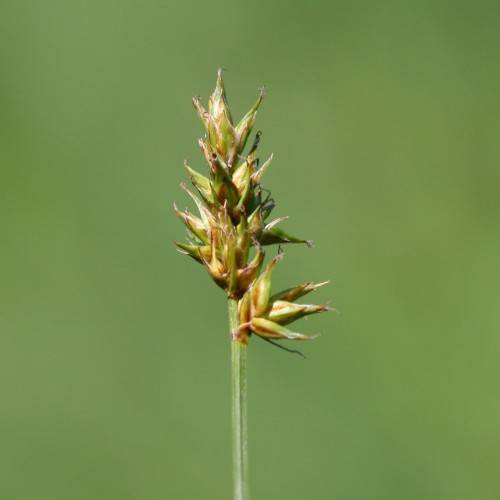
Lesser Prickly Sedge
Carex muricata subsp. lamprocarpa
Watering:
Frequent
Hardiness Zone:
Sun:
Sun, Partial Shade
Soil:
Sand
Leaf:
Yes
Growth Rate:
Low
Drought Tolerant:
Yes
Salt Tolerant:
Yes
watering
Muhlenberg's Sedge (Carex muehlenbergii var. muehlenbergii) should be watered twice a week in the summer and once a week in the winter. During the summer, the plant needs 1-1.5 inches of water per week, and during the winter, the plant needs 0.5-1 inch of water per week. Make sure not to over-water the plant; it should never become soggy or standing water should not collect. When watering the plant, use a slow, gentle trickle of water, making sure the water is applied evenly.
sunlight
Muhlenberg's Sedge (Carex muehlenbergii var. muehlenbergii) has adapted to require moderate amounts of sunlight in order to survive. It thrives in partially shaded areas, particularly where it receives 4-6 hours of direct sunlight each day. The majority of the sunlight should come in the morning and early afternoon hours. During the peak summer months, afternoon direct sunlight exposure should be avoided to protect the plants from intense heat. In cooler seasons, allowing for a little extra sunlight can help ensure the plants' health.
pruning
Muhlenberg's Sedge, Carex muehlenbergii var. muehlenbergii, should be pruned in late winter or early spring. Depending on the size of the plant, pruning should be done carefully with sharp garden shears. Generally, about 1-third of the oldest stems should be cut to the ground and removed. This will promote new growth and help keep the plant from becoming overcrowded and lacking in vigor. When pruning, take care not to damage the new growth, as this can stunt the development of the plant. Additionally, before performing any pruning it is beneficial to inspect the plant for any signs of disease or insect damage. Pruning away impacted foliage can help reduce the spread of disease or harm from pests.
